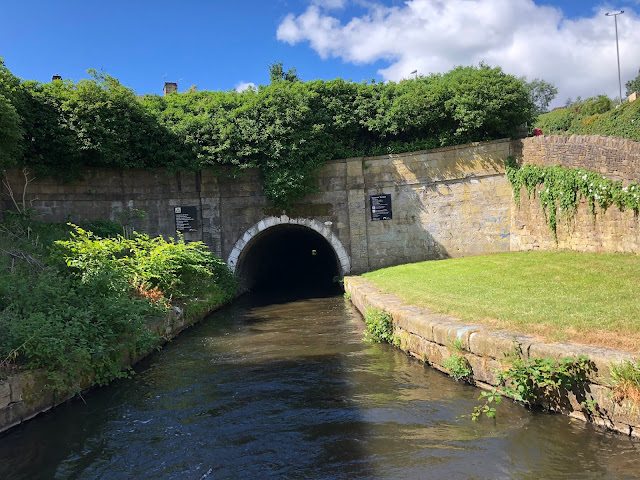Foulridge tunnel (1,640 yards)
The Leeds Liverpool canal is 127.25 miles long and flows from the inland woollen town of Leeds to the coastal sea port of Liverpool, crossing the Pennines along the way. Work on the canal started in 1770 and built in a number of sections and was finally completed in 1816.
By 1777 sections of the canal had been opened at each end of the canal at Leeds and Liverpool, but money had run out to complete the middle section.
In 1791 work re-started on building the canal west from Gargrave. Foulridge Tunnel was opened in 1796 making the canal navigable from Leeds to Burnley.
"The Foulridge Tunnel was a major construction achievement, but is today best known for the story of a cow who once swam the whole length of the tunnel. The tunnel is straight enough that you can see right through it, though the roof is quite low in places. Most of it was built using the 'cut and cover' method - but despite this, unexpectedly difficult rock conditions meant that construction took a whole six years. Travel through the tunnel, which has no towpath, is only possible in one direction at a time, so traffic lights control a ten-minute window in each direction each hour.
In 1912, a cow named Buttercup fell into the canal by the southern portal. Rather than wade out as usual, she chose to swim the whole 1640 yards to the northern end, where she was revived with brandy by drinkers in the nearby Hole in the Wall pub. Pictures in the pub commemorate the occasion.
Foulridge Wharf, also at the northern portal, was built to unload cargoes of raw cotton from North America for weaving in the Lancashire mills. There is a tea-room on the wharf as well as the pub. Foulridge Lower Reservoir, built to supply water to the canal, was constructed almost directly above the tunnel." link
A nearby information board about the town of Foulridge has this information about the canal and tunnel.
Foulridge marks the summit level of the Leeds Liverpool Canal 487 feet and 6 inches above seal level. Robert Whitworth, the Canal Company engineer, designed the Mile Tunnel also known as Foulridge Tunnel. It took 5 years to complete and cost over £20,000. With no towpath, horse drawn barges had to be legged through the tunnel. Leggers lay on the boat's bow deck and walked along the tunnel walls pulling the boat with them. Legging ceased officially after a legger unfortunately lost his life in 1886, then a tug was introduced. Diesel boats eventually reduced the need for the tug, which was withdrawn from service in 1937. The traffic was then controlled by tunnel keepers using a telephone, and from 1963 by traffic lights operating on a time switch. Pleasure craft now using the tunnel have to follow a timetable, which regulates when the tunnel can be entered.
This section of the canal was completed in 1801, and the tunnel passed through a coal mining area that had affected the level of the water table, making construction difficult, especially as it was cut using hand tools only.
The tunnel was constructed without a towpath, so boaters would lie on their backs and walk along the ceiling or wall of the tunnel to propel the boat along. ‘Boat Horse Lane’ was built to connect the two ends of the tunnel. As the boats navigated the tunnel, the horses were walked over the top, along the lane and back onto the towpath.
The tunnel is a Historic England Grade II listed building. link It has the following description. "Portal of Gannow tunnel of Leeds-Liverpool Canal. c1797-1801; engineer, Samuel Fletcher. Sandstone ashlar. Semicircular arch with rusticated voussoirs, channelled pilasters with primitively-patterned "vermiculation", a plain band, and coped parapet; slightly concave full-height abutments; oval number plate "128" on the right-hand abutment."
 |
| North east portal |
 |
| North east portal |
 |
| South west portal |
 |
| South west portal |







No comments:
Post a Comment